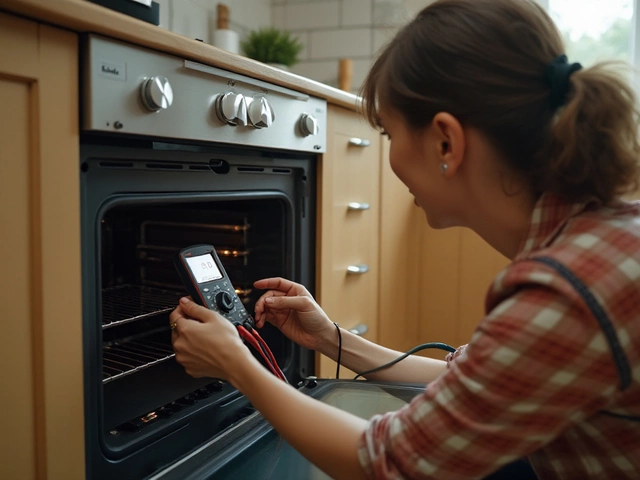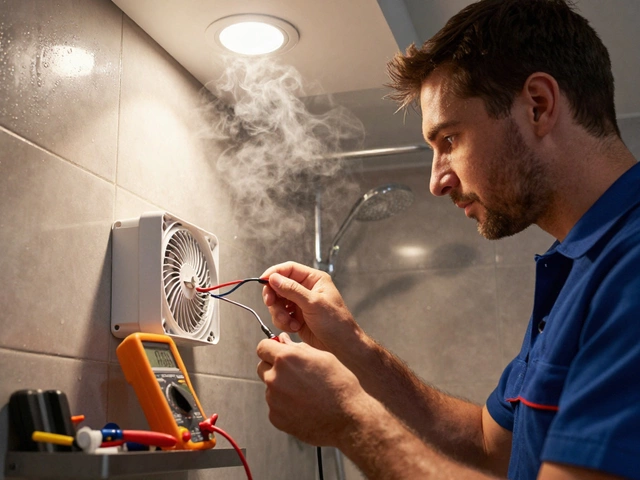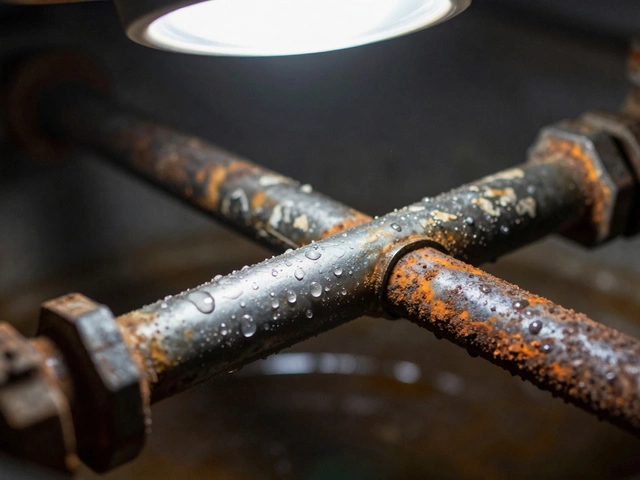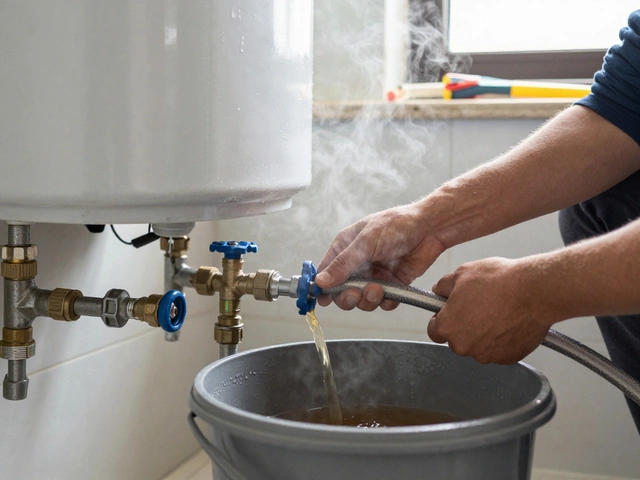Ever stared at a 20-year-old oven and wondered if it’s a ticking time bomb or a kitchen workhorse refusing to quit? That’s a question a lot of folks ask when the door won’t shut right, or it takes forever to preheat. The thing is, electric ovens from two decades ago aren’t all junk—some are surprisingly sturdy, but fixing them is a bit of a gamble.
There’s no magic number that tells you when to give up on an old oven, but there are some numbers that matter: the price of repairs, how often it breaks, and what a new one costs. Here’s the deal—if your oven’s been reliable, lives in a clean kitchen, and only has minor issues, fixing just might be the smarter move. But if parts are rare or pricey, and you feel like you see your repair tech more than your family, it’s time to rethink.
The first step? Figure out what’s actually wrong. Some repairs, like swapping out a heating element, are cheap and quick. Replacing the electronic control board, though—well, that can cost as much as a small vacation. And parts for older models can be a nightmare to find (think long shipping times and high prices).
- Why Ovens Last (or Don’t)
- Common Problems in 20-Year-Old Electric Ovens
- What Does It Cost To Fix Versus Replace?
- Hidden Benefits and Downsides of Old Ovens
- How To Decide: Fix or Ditch?
- Tips for Extending Oven Life
Why Ovens Last (or Don’t)
Ever wonder why some ovens seem to run forever while others bite the dust in just a decade? It mostly comes down to how they’re built and what kind of life they’ve had. Electric ovens made 20 years ago are often simpler and sturdier than a lot of new ones. There’s less to go wrong—no Wi-Fi, no fancy digital displays, just tough old-school parts.
Here’s the thing: most quality electric ovens from the early 2000s came with solid metal heating elements, thick insulation, and basic thermostats. If you’ve been keeping yours clean and haven’t slammed the door a hundred times, the main body and heating parts might still be strong. Regular cleaning plays a huge role too, since grease and crumbs can wear out fan motors and gunk up controls.
Of course, there’s the other side. Ovens die early when electronic boards fry, door seals crumble, or heating elements break. Long-term use at high heat speeds up all this wear. And if you’ve got hard water or moisture leaking into the wiring, corrosion gets to the electrical bits faster than you’d think. Another killer? Power surges—just one bad one and you might be out of luck.
If you’re thinking about electric oven repair, the honest truth is most old ovens that still heat up have only had one or two fixes since new. Ones with endless problems often haven’t been cared for, or they just weren’t well-built to begin with. As boring as it sounds, the biggest secret to a long-lasting oven is just cleaning out the gunk, not overloading it, and maybe giving it a break once in a while.
Common Problems in 20-Year-Old Electric Ovens
If your oven's blown out twenty birthday candles, it’s probably hiding a few issues. Parts just wear out over time, especially with all that heating and cooling, and older tech isn't as hardy as it used to be. Let's break down the main things that trip up these old machines.
- Heating Elements Burning Out: This is super common. You’ll know if the oven barely gets hot or cooks unevenly. Replacing a baking element is often a $30–$80 job, but labor can double it.
- Temperature Sensor Fails: When your roasts come out half raw and half burnt, a faulty sensor might be the culprit. Sensors lose accuracy after years of use under high heat.
- Worn Out Door Gasket: If you notice heat leaking out or the kitchen heats up every time you use the oven, the door gasket’s probably toast. That means wasted energy and money.
- Broken Control Boards: Digital controls from the early 2000s weren’t made to last forever. When buttons stop working or the display glitches, it’s often the control board—an expensive fix.
- Messed Up Thermostats: If your oven’s temperature settings are a lie, the thermostat might be acting up. Food takes longer, or burns quicker—either way, it wastes your time.
- General Wear and Tear: Knobs crack, lights flicker, racks warp from years of turkey roasting—these annoyances add up.
Here’s a quick look at which problems pop up the most and what they usually cost to fix:
| Problem | Estimated Repair Cost ($) | How Often in 20-Year-Old Ovens |
|---|---|---|
| Heating Element Replacement | 80–160 | Very common |
| Temperature Sensor | 100–180 | Common |
| Door Gasket | 50–120 | Common |
| Control Board | 200–350 | Moderately common |
| Thermostat | 100–250 | Less common |
To quote Appliance Repair Magazine,
"Most electric ovens over 15 years old face regular part failures. Heating elements and control boards are top offenders after the two-decade mark."
What’s the takeaway? If you’re dealing with cheap-to-fix stuff, your old oven’s got some life left. But throwing money at a dead control board or scarce parts isn’t smart—you’ll hit that break-even point fast. And don’t forget, labor costs can sneak up and make a repair seem less attractive than it looks at first.
What Does It Cost To Fix Versus Replace?
This is where the rubber meets the road. When you’re staring down a repair bill for a 20-year-old oven, you want to know if it’s actually worth it or if you’re throwing good money after bad. Let’s break down some numbers based on real repair costs and what you’re up against with replacement.
On average in the U.S., fixing something simple like a faulty bake element or replacing a thermostat might set you back between $100 and $250, parts and labor included. If it’s the control board, you could be looking at a $300+ bill, and that’s if you can even find the part—lots of those aren’t made anymore for models this old.
A brand new mid-range electric oven can cost anywhere from $500 to $1,200. If you want one with smart features or convection, the price heads up to $1,500 or more. Don’t forget hookups and delivery, which can add another $100 to $200 depending on where you live.
| Repair | Typical Cost (USD) |
|---|---|
| Heating Element | $100–$250 |
| Thermostat | $130–$200 |
| Door Gasket | $80–$180 |
| Electronic Control Board | $300–$500 |
| New Electric Oven | $500–$1,500+ |
Here’s a quick way to decide: If your fix costs more than half the price of a decent new oven, it’s probably smarter to invest in a replacement. You get a fresh warranty and better efficiency. But if it’s a cheap, quick fix and your oven hasn’t caused much grief, repair could stretch its life another few years.
- Add up past repair bills. If it’s nickel-and-diming you every year, replacement starts to make a lot more sense.
- Check for hidden costs. While repairs might seem less up front, old ovens can eat more electricity if they're inefficient.
The tipping point usually boils down to peace of mind. If each use has you wondering what will break next, replacing solves way more than just baking your next pizza.
If you’re Googling electric oven repair every few months, you’re already spending too much.
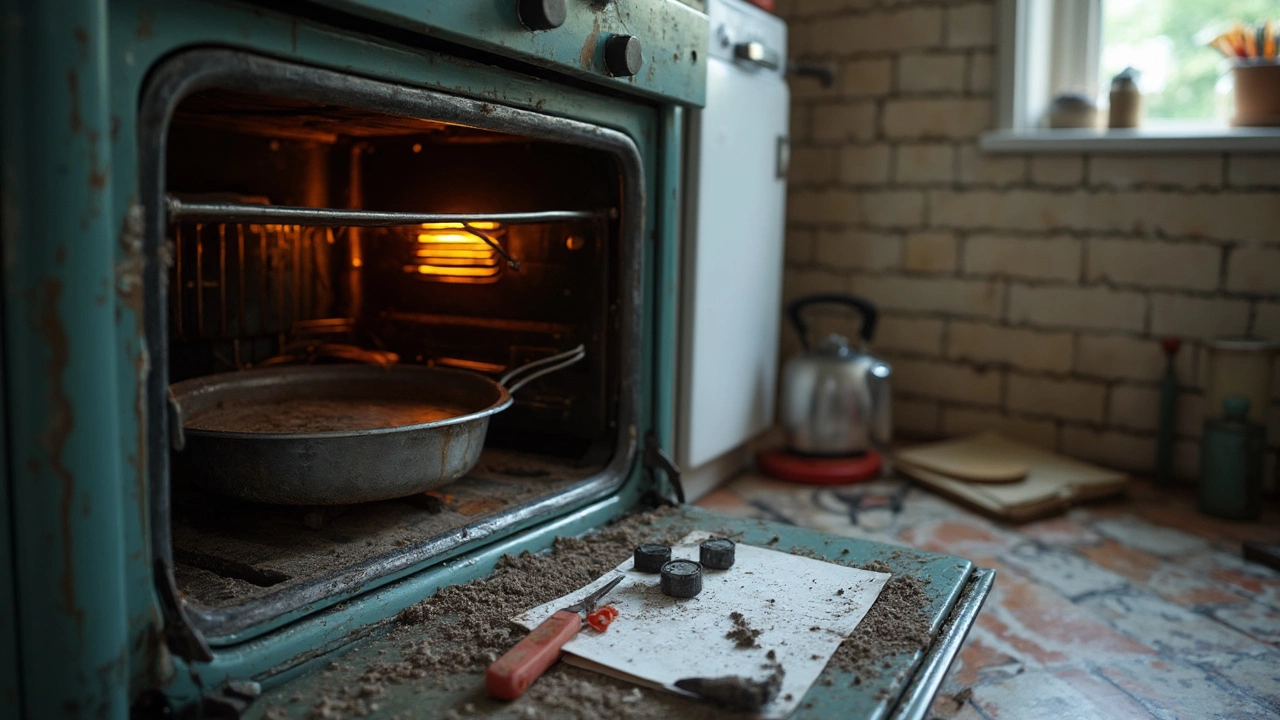
Hidden Benefits and Downsides of Old Ovens
Owning a 20-year-old oven has its ups and downs. On the plus side, some older electric ovens are absolute tanks. No touchscreens or fancy sensors to mess up, just solid metal and a lot of wiring. Basic designs mean there's less to break, so if yours still cooks evenly, that's no small feat. Did you know models built before 2010 often have fewer electronic failures? Newer ovens, with more bells and whistles, tend to have parts that fail faster.
Here are some benefits you might not have thought about:
- Parts like heating elements and knobs can be swappable with basic tools—there are even DIY guides all over YouTube.
- Older ovens sometimes get hotter, faster, which means crispier pizza and better browning, because the insulation hasn’t broken down yet.
- No software updates or digital parts that randomly glitch; mechanical timers usually just keep clicking along.
- You avoid the e-waste problem by keeping a still-working machine out of the landfill.
But hanging onto an old oven isn't always a win. Problems can sneak up on you.
- Sourcing original parts can be tough. Some are discontinued, especially for brands that went out of business.
- Energy use climbs over time—heating elements wear down and insulation gets loose, causing the oven to suck up more power. According to the U.S. Department of Energy, an older oven might use up to 15% more electricity than a newer Energy Star-rated model.
- Old seals let heat leak out, messing up temps and baking results.
- Modern safety features, like automatic shutoff and child locks, probably aren’t there.
Take a look at this quick comparison between old and new electric ovens:
| Feature | 20-Year-Old Oven | Modern Oven |
|---|---|---|
| Repair Cost | Low for small fixes, high for rare parts | Medium, but parts more widely available |
| Energy Use | About 15% higher than new | More efficient (Energy Star rated models) |
| Features | Basic temperature and timer | Smart controls, safety locks, convection, etc. |
| Reliability | Fewer parts to break | More tech, more possible points of failure |
| Resale Value | Very low | Higher, especially if still under warranty |
Bottom line? If your priority is saving money and you’re handy, your old oven might just keep chugging along. But if you're after energy efficiency, cool features, or smoother repairs, a newer model could be worth the change. If thinking about electric oven repair feels like tossing cash into a pit, it’s probably time to weigh your options.
How To Decide: Fix or Ditch?
It feels like a gamble sometimes, right? You’re weighing what’s left in your wallet against how much hassle you’ll put up with. To make this call logically, you just need a few straight answers about your oven.
First, get a price for the repair—don’t just read forums. Call at least two local appliance repair shops and ask straight up for a quote. If the fix is less than half the cost of a new oven, and the oven hasn’t had a ton of other issues, that’s usually worth fixing. A brand-new basic electric oven will often cost between $500 and $800. The average repair bill for a heating element? Around $120 to $200, while a control board swap can blow past $300, sometimes even more if your model is rare.
- electric oven repair makes sense if the oven’s in otherwise good shape, parts are available, and you’re not dealing with a string of problems.
- If parts are hard to find or super expensive, that’s a big red flag. You might end up dropping money for a part that isn’t even guaranteed to work for long.
- If your oven’s insulation is shot or if you see rust around the frame, don’t bother—those fixes aren’t worth it on a 20-year-old model.
Another trick: check your energy bill. Old ovens get less efficient with age. If your electricity usage has crept up and nothing else has changed in your home, that old oven could be costing you monthly. Sometimes a replacement pays off faster in utility savings than you’d think.
Last tip—listen to your instincts. If the oven is part of your daily routine, kicking it down the road another year is only worth it if you trust the repair will hold. If you’re already annoyed with it, move on and don’t look back.
Tips for Extending Oven Life
If you want your oven to keep cooking for years, you’ve got to give it a little extra care. A lot of folks are surprised that regular upkeep can push an oven past the 20-year mark. Here’s how you squeeze more life out of your reliable old appliance.
- Clean Spills Fast: Don't let food spills bake onto surfaces. Wipe them up as soon as the oven cools down. Baked-on grime can clog vents and ruin heating elements.
- Check the Door Seal: Test the rubber gasket around the door. If it’s cracked or loose, heat escapes and cooking gets uneven. Replacements are cheap and can prevent wasted energy.
- Use Self-Cleaning Functions Sparingly: The high heat from these cycles can stress oven parts, especially in older ovens. Stick to manual cleaning and use self-clean only when necessary.
- Monitor the Heating Element: Peek inside when the oven is on—if parts of the element stay dark, it's a sign to replace it before total failure.
- Don’t Slam the Door: It sounds silly—but slamming the door can misalign hinges and break the glass. Gentle closing keeps everything in line.
- Inspect Controls and Wiring: If buttons stick or the display acts weird, deal with it early. Catching little problems before they turn big can save your oven from a full breakdown.
Here’s a quick look at what regular maintenance can really do for an old oven:
| Maintenance Task | Average Added Oven Lifespan |
|---|---|
| Cleaning spills after every use | 6–12 months |
| Replacing door gasket when worn | 1–2 years |
| Annual check of heating element | 1–3 years |
| Inspecting and tightening connections yearly | 6–18 months |
Don’t forget, a bit of routine attention makes the difference between shelling out for a new oven and proudly running that 20-year-old model for a few more rounds of Thanksgiving dinners. And when you think about electric oven repair, spending a few minutes on upkeep is way cheaper than waiting for something big to break.



